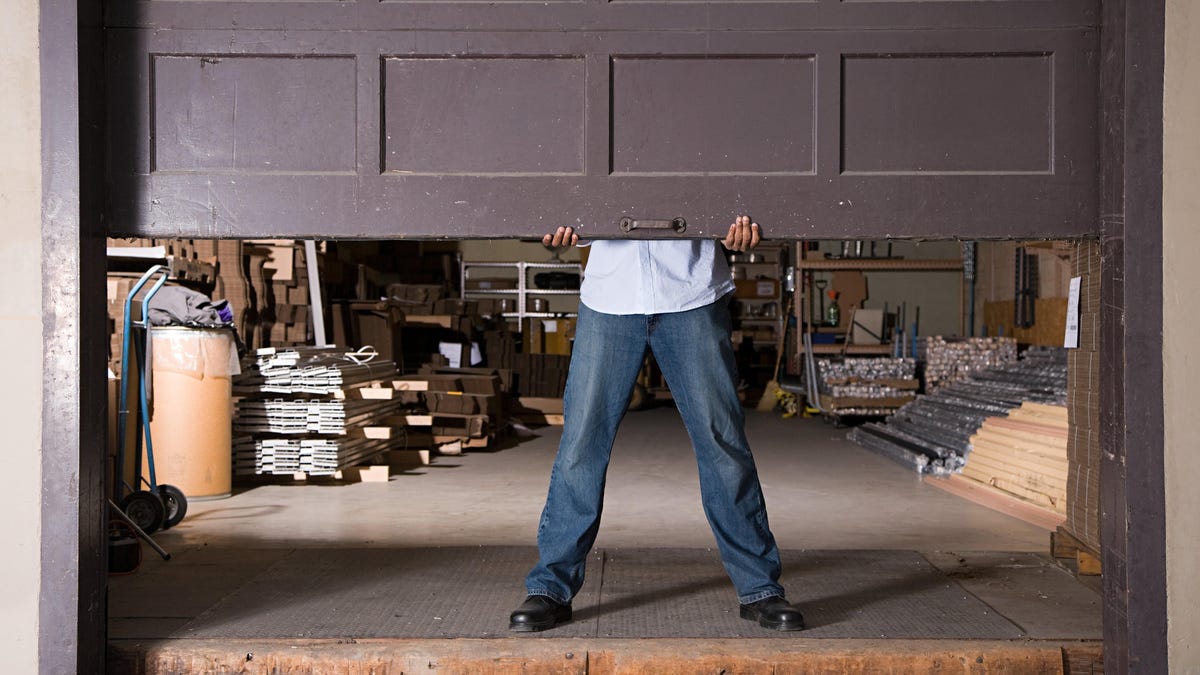12 Everyday Dangers You Should Avoid at All Costs
We’ve given you tips for extremely specific emergencies, but what you may not realize is that emergency situations can be waiting right around the corner—or in your own house. Here are some tips to help you avoid the under-appreciated...

Photo: XiXinXing (Shutterstock)
We’ve given you tips for extremely specific emergencies, but what you may not realize is that emergency situations can be waiting right around the corner—or in your own house. Here are some tips to help you avoid the under-appreciated but ever-present dangers of everyday life.
Clothes dryers cause 2,900 fires per year, the U.S. government estimates. Dryer lint is highly flammable, and it accumulates on the lint trap and can accumulate in the vents. Hot air can ignite that lint, especially if the vents become blocked.
The bottom line: Failure to clean the dryer is the leading cause of dryer fires. The report states that “proper clothes dryer maintenance to avoid a fire hazard involves removing the lint from the traps, vents, and surrounding areas of the dryer.”
Car seats and seatbelts are designed to keep you as safe as possible in a crash, but they assume that you’re sitting upright in your seat, with your feet on (or dangling down toward) the floor. In a crash, airbags will inflate from the dashboard to protect your head, but if your feet are in the way, the impact can cause catastrophic injuries to your legs.
Maybe you were taught this one when you learned to cook, or maybe you’re still waiting for your opportunity to learn it the hard way. Potholders and oven mitts protect you from burns because cloth is a poor conductor of heat. Unfortunately, wet cloth is a very good conductor of heat. A wet mitt will get you burned.
It’s pretty amazing that something as big as a tree can stand upright for so long. A living tree is strong, somewhat flexible, and can repair itself as it grows. But a dead tree has none of those characteristics. It’s still just as tall and just as heavy, but far more likely to fall on you.
Even experienced tree professionals have been injured and killed by dead trees and by trees that split during a storm. One type of partially fallen tree limb is known as a widowmaker because it can fall suddenly and fatally. If you see a tree leaning, split, or otherwise looking suspicious after a storm, don’t go near it—call a professional.
This one I learned in chemistry class, where we routinely heated chemicals in glass flasks and beakers. Hot glass looks exactly like cold glass, so don’t assume that a beaker on the lab bench is safe to pick up.
This may not be an earth-shattering revelation: A lot of things look the same when hot as when cold, including cast iron pans and the hood of a car that’s just been on a drive. So never assume that an object that gets hot in operation isn’t hot right now. And for some fun, check out this video of a seemingly cold glass that is hot enough to pop some popcorn.
It may seem obvious that oily rags can be flammable, but what you might not realize is that they don’t need a flame to ignite. As certain types of oils begin to dry, they oxidize. This is a chemical reaction that can result in heat, and the hotter the rags get, the more easily they oxidize. This means that a pile of oily rags can start to smolder and can eventually catch into a blazing fire, as shown in the video above.
The National Fire Protection Association recommends spreading oily rags out until they are fully dry, never piling them up or just tossing them into a bucket. This applies to rags that you’ve used with varnish, oil-based paints and stains, gasoline, lacquers, and paint thinners.
The springs that operate garage doors are under extreme amounts of tension, and if that tension is suddenly released, they can kill a person, or cause serious injury. The video above demonstrates this with a melon, not a person’s head, so it’s safe to watch. If your garage door system is damaged, don’t attempt a DIY repair unless you know what you’re doing.
Chlorine bleach is a good cleaner. Ammonia is a good cleaner. Mixed together, they can produce toxic chloramine gas, among other dangers. What about bleach and vinegar? Chlorine gas—yep, the same thing used in World War I. Alcohol and bleach can create chloroform when combined. As a general rule, don’t mix cleaning products or clean the same surface with two different products unless you know for sure that it’s safe to mix that particular combination.
This is one of those things that you’ll teach your kid and then completely forget about yourself when you drop a knife. A falling knife “has no handle”—or in other words, you better not try to catch it. When you drop a knife, the best thing to do is to stay out of its path and watch to see where it goes, to make sure you can retrieve it before you or somebody else gets hurt.
Just because a large animal looks friendly or harmless doesn’t mean that it actually is. Moose injure more people than bears in Alaska, the fish and game department points out. In Yellowstone National Park, the same can be said of bison. A report on bison injuries there found that every one of them “resulted from failure to maintain the required distance of 75 feet” from the animals. Do not pet the bison. Do not get close to get a cute picture. Leave the moose and the bison (and every other large wild animal) alone.
If your turkey is still frozen on Thanksgiving morning, it’s still OK to roast it—it will just take a bit longer. But if you were planning on deep frying it, don’t. As the Consumer Product Safety Commission demonstrates here, the ice in a frozen turkey quickly turns to steam, and that steam expands as it heats up. The result: a hot oil turkey volcano/explosion.
Nature is full of beautiful wonders, and many of them should not be touched. I saw an American Dagger caterpillar one day on the street, and had the presence of mind to poke it with a stick instead of my finger even though (in fact, because) I didn’t know what it was. I’m proud of myself for that. The dagger isn’t likely to kill you, but it can cause nasty skin irritation.
Besides caterpillars, a wide variety of cool-looking creatures are venomous and should be left alone. Cone snails look like pretty seashells, but they can sting you. Blue ringed octopuses are adorable, but their bite can cause paralysis and death. If you don’t know for sure that a cute creature is safe, don’t pick it up.

 Kass
Kass 






















![Run An Ecommerce SEO Audit in 4 Stages [+ Free Workbook]](https://api.backlinko.com/app/uploads/2025/06/ecommerce-seo-audit-featured-image.png)









